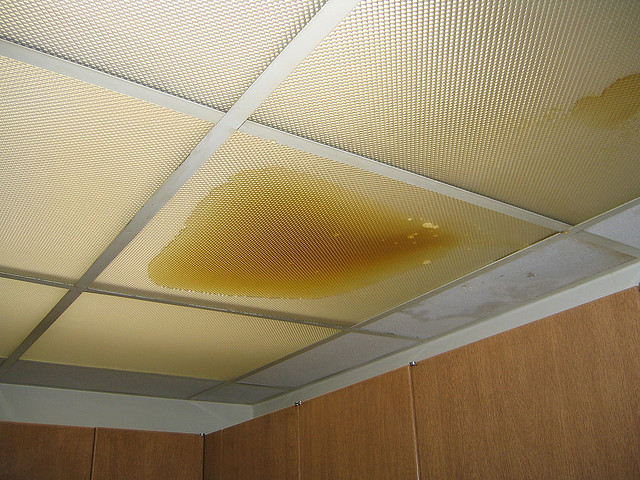Just about everyone maintains their own individual idea in relation to Locating water leaks.

Early discovery of leaking water lines can reduce a possible disaster. Some tiny water leakages may not be noticeable.
1. Check Out the Water Meter
Every house has a water meter. Checking it is a guaranteed manner in which aids you uncover leakages. For beginners, switch off all the water resources. Ensure no one will purge, use the tap, shower, run the cleaning machine or dishwasher. From there, go to the meter and watch if it will change. Because nobody is using it, there must be no activities. That indicates a fast-moving leak if it moves. Also, if you discover no changes, wait an hour or 2 and also examine back once more. This suggests you might have a slow-moving leakage that might even be underground.
2. Inspect Water Usage
Evaluate your water bills and also track your water intake. As the one paying it, you must discover if there are any type of inconsistencies. If you find sudden changes, despite your intake coinciding, it implies that you have leaks in your plumbing system. Bear in mind, your water expense need to drop under the same array on a monthly basis. An unexpected spike in your bill shows a fast-moving leakage.
Meanwhile, a constant boost every month, despite having the exact same habits, reveals you have a slow leakage that's also gradually intensifying. Call a plumber to completely check your building, particularly if you feel a cozy area on your flooring with piping underneath.
3. Do a Food Coloring Test
When it involves water usage, 30% originates from bathrooms. Test to see if they are running appropriately. Drop flecks of food color in the container as well as wait 10 mins. There's a leak between the container and bowl if the shade somehow infiltrates your bowl during that time without flushing.
4. Asses Outside Lines
Don't neglect to examine your exterior water lines also. Needs to water permeate out of the link, you have a loosened rubber gasket. One little leakage can waste bunches of water and spike your water expense.
5. Assess the scenario and check
Homeowners ought to make it a practice to inspect under the sink counters as well as even inside cupboards for any type of bad odor or mold development. These 2 warnings suggest a leak so timely attention is required. Doing routine evaluations, even bi-annually, can conserve you from a significant issue.
A lot more significantly, if you understand your house is already old, keep a watchful eye on your heaters, hoses, pipes etc. Look for stainings as well as deteriorating as many pipes and devices have a life expectancy. They will additionally normally weaken as a result of deterioration. If you presume leaking water lines in your plumbing system, do not await it to intensify. Call a professional plumber right away so you do not end up with a terrible mess in your home.
Early discovery of leaking water lines can reduce a potential disaster. Some little water leaks might not be visible. Inspecting it is a proven method that aids you find leaks. One tiny leak can throw away lots of water and also spike your water bill.
If you presume leaking water lines in your plumbing system, don't wait for it to intensify.
How to Know If Your Home Has a Hidden Leak
Water Meter Reveals Inexplicable Water Usage
If you’d like to test whether or not there’s a leak somewhere in your home, you can do this using your water meter. Here is how to conduct the test:
Don’t use any water in your home for at least 30 minutes; this also means not turning on faucets or water-using appliances.
Go outside, and check your water meter for activity.
If your water meter shows that there was activity, even though no one was using any water, this proves that there is a leak in your home.
Visible Mold or Mildew Growth
Leaks behind walls create moist, dark environments that allow mold and mildew to grow and thrive. Eventually, you might see mold growth forming on the wall closest to a hidden leak.
If mold is growing in an area that receives a high amount of moisture, such as a bathroom, it may simply be an indication that better ventilation is needed. However, if you see mold growth on a wall or the ceiling in an area where you would not expect, you probably have a hidden leak.
Musty, Mildew Odor
Sometimes you might not be able to see the mold or mildew that is growing as a result of a leak. However, the smell can give the problem away just as easily. If you catch a whiff of something musty, there’s a good chance that old water is collecting somewhere in your home that you can’t see.
Stained/Warped Walls, Ceilings, or Floors
When your home soaks up water, a variety of red flags can become visible, including ceiling stains, bubbling drywall, warped walls, and sagging floors. While these issues can be caused by excess humidity, they can also be signs that a pipe or plumbing connection has started leaking behind your walls.
Inexplicably High Water Bill
After a while, you get a general sense for what your water bill should be. If you own a pool or sprinkler system, your bill will tend to be higher during summer. However, if you receive a water bill that seems especially high, and you can’t figure out what caused it, then you may have a hidden leak somewhere that’s increasing your bill.
https://www.plumbingjoint.com/blog/2019/july/how-to-know-if-your-home-has-a-hidden-leak/

I ran across that content about Detecting hidden plumbing leaks when surfing the web. Feel free to take the time to share this entry if you liked it. I enjoy reading our article about Locating water leaks.
Immediate response? Click here.
Comments on “Find Hidden Water Line Leaks: 6 Ingenious Detection Tricks”